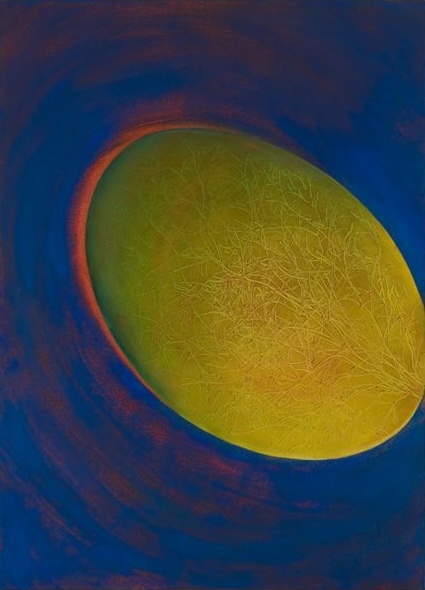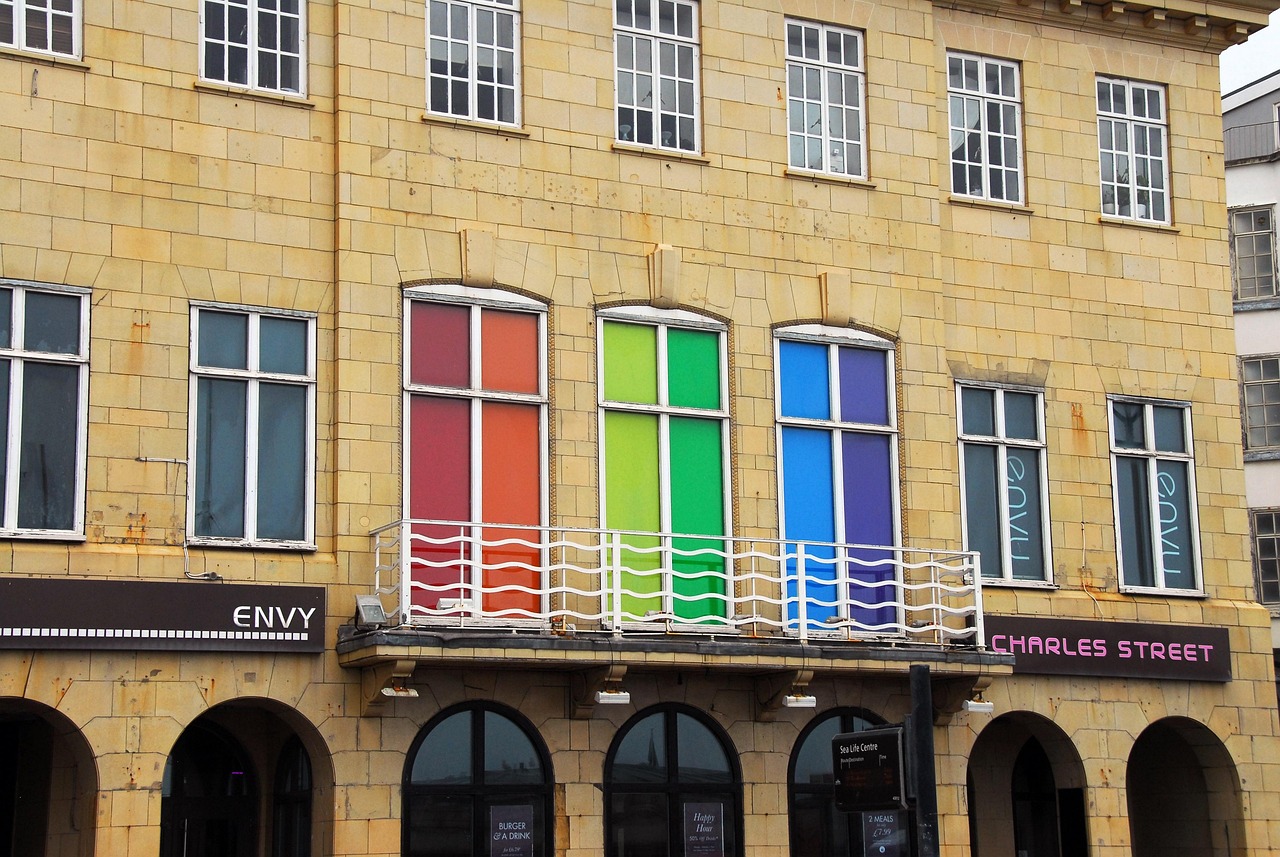The goal of this ritual is to enable a congregation to let go of its building and the kedushah within, so that the building ultimately can be sold, repurposed, or demolished. The congregation may need to give expression to a range of emotions, especially depending on what comes next. There may be joy, especially if a new building is being built. There may be sadness and fear of the unknown, especially if the congregation is merging into another or still searching for a new home. Leaders of this ritual should calibrate the tone accordingly, and might choose different psalms or be intentional about what melodies are sung.
Setting: The congregation gathers in the sanctuary for the last time. At least one Torah remains in the Ark. One mezuzah remains on the outdoor of the sanctuary or the building itself, and has been loosened in preparation for removal. Congregants may be invited to gather, and/or a livestream video link may be established. A last prayer service may be led, if the time of day and the safety of the space are appropriate. Clergy and lay leaders gather near the Ark. At least three members of the leadership (e.g., clergy, president, educator) are designated as the Beit Din for the ritual.
1: Opening with niggun and song: “Mah Tovu”
מַה־טֹּבוּ אֹהָלֶיךָ יַעֲקֹב מִשְׁכְּנֹתֶיךָ יִשְׂרָאֵל
How good are your tents, O Jacob, and your dwellings, O Israel.
(Numbers 24:5)
2: Words of Welcome
Clergy introduces the purpose of the ritual, to release the kedushah from within these walls, as the congregation transitions into a new space and the Shekhinah travels with us.
Example: “There is goodness that grows and holiness that accumulates in every place where we gather in prayer, Torah study, and community. We are here today to honor and release the kedushah that has filled this space over the years. This building, which has been holy to us, will now become chol — ordinary. We know that wherever we go, the Divine Presence, the Shekhinah, travels with us.”
3: Liturgy for Consent and Release by the Beit Din — Al Da’at Hamakom (adapted from the introduction to Kol Nidrei)
(recite in English, one time)
By consent of the Divine Presence, and by consent of this community,
by consent of the council above, and by consent of this council below,
We release the sanctity of this synagogue.
(sing in Hebrew with familiar melody from Kol Nidrei service, repeat three times):
עַל דַּֽעַת הַמָּקוֹם וְעַל דַּֽעַת הַקָּהָל.
בִּישִׁיבָה שֶׁל מַֽעְלָה וּבִישִׁיבָה שֶׁל מַֽטָּה.
אָֽנוּ מַתִּירִין לְהַתִּירִ אֶת קְדֻשַּׁת בֵּית הַכְּנֶסֶת הַזֶּה.
4: Liturgy for Memories
“One thing I ask of God, only that do I seek: to live in the house of God all the days of my life, to gaze upon the beauty of God, to return to God’s Sacred Space.”
אַחַת שָׁאַלְתִּי מֵאֵת־ה’ אוֹתָהּ אֲבַקֵּשׁ שִׁבְתִּי בְּבֵית־ה’ כָּל־יְמֵי חַיַּי לַחֲזוֹת בְּנֹעַם־ה’ וּלְבַקֵּר בְּהֵיכָלוֹ
(Psalm 27:4)
Clergy and/or lay leaders share reflections and reminiscences of the life of the congregation in this space.
Example: “Each place we call a beit-Hashem, a House of God, becomes so. Our community came here in [year] and has called this space our sacred home since then. We gathered in good times and in difficult times, recognizing the beauty of life, celebrating and grieving together, and bearing witness to God’s presence. [Speaker describes events that are specific to the life of the kahal]. We’d like to invite [members] to share memories of our time here.”
5: Liturgy for Gratitude — Mi Shebeirakh for the kahal (from Shabbat-morning liturgy)
Example: “We chant the misheberach with gratitude and acknowledgement for all that our members, past and present, have done for God and for our community in this space, and for all that our members of the future will do in [new space].”
(adapted from Koren Sacks Siddur, p. 519; Siddur Lev Shalem for Shabbat and Festivals, p. 176.)
מִי שֶׁבֵּרַךְ אֲבותֵינוּ אַבְרָהָם יִצְחָק וְיַעֲקב שָׂרָה רִבְקָה רָחֵל וְלֵאָה, הוּא יְבָרֵךְ אֶת כָּל הַקָּהָל הַקָּדושׁ הַזֶּה עִם כָּל קְהִלּות הַקּדֶשׁ. הֵם וּמִשְׁפְּחֹתֵיהֶם וְכָל אֲשֶׁר לָהֶם. וּמִי שֶׁמְּיַחֲדִים בָּתֵּי כְנֵסִיּות לִתְפִלָּה. וּמִי שֶׁבָּאִים בְּתוכָם לְהִתְפַּלֵּל. וּמִי שֶׁנּותְנִים נֵר לַמָּאור וְיַיִן לְקִדּוּשׁ וּלְהַבְדָּלָה וּפַת לְאורְחִים וּצְדָקָה לָעֲנִיִּים. וְכָל מִי שֶׁעוסְקִים בְּצָרְכֵי צִבּוּר בֶּאֱמוּנָה. הַקָּדושׁ בָּרוּךְ הוּא יְשַׁלֵּם שכָרָם וְיָסִיר מֵהֶם כָּל מַחֲלָה וְיִרְפָּא לְכָל גּוּפָם וְיִסְלַח לְכָל עֲונָם. וְיִשְׁלַח בְּרָכָה וְהַצְלָחָה בְּכָל מַעֲשה יְדֵיהֶם עִם כָּל יִשרָאֵל אֲחֵיהֶם. וְנאמַר אָמֵן:
“May the One who blessed our ancestors Abraham, Isaac, and Jacob, Sarah, Rebecca, Rachel, and Leah, bless all this holy congregation, together with all other holy congregations, they and their families, and all that is theirs. May the Holy One bless those who unite to form synagogues for prayer and those who come there to pray; those who provide lamps for light and wine for Kiddush and Havdalah, food for visitors and charity for the poor, and all who faithfully occupy themselves with the needs of the community. May the Holy One give them their reward, and remove from them all illness, and grant them complete healing, and forgive all their sins. May God send blessing and success to all the work of their hands, together with all their fellow Jews of the people Israel, and let us say Amen.”
6: Final Removal of the Torahs
Introduce mood and mindset for final hakafah, and final goodbye to the sanctuary.
Example: “For one last time, we will circle the sanctuary with the Torahs, as we have done on Shabbat and holidays. From corner to corner, wall to wall, this space has been filled with the kedushah or our tefillot and limmud. With this final hakafah, this time, we will take the kedushah with us. We will pull the kedushah from the walls and the ceiling and the seats, so that this space can revert to chol, an ordinary physical place.”
The ark is opened, and all of the congregational Torahs are handed to clergy and lay members. Ark is closed. With the Torah in the lead, the congregation walks in a hakafah around the sanctuary. After a full loop in the usual counterclockwise direction, the Torahs go through the center aisle or middle of the space towards the doorway where the last mezuzah remains.
The hakafah may be conducted in silence, as participants listen to the sounds of their souls reverbating in the space; a leader should invite participants into this silence.
Alternately, ritual leaders may lead singing or instrumental music, whether reflective or festive, as befits the moment. One possibility is a medley of liturgical melodies from throughout the Jewish year. Another option is a reprise of the opening niggun, “Mah Tovu.”
If the livestream technology permits, those watching online may be invited to type blessings and memories into the “chat” function.
7: Removal of Mezuzah
Ritual leaders gather with the Torahs and community participants beside the remaining mezuzah (which should be loosened before the ritual for ease of removal).
Clergy or lay leaders make closing remarks, transitioning the congregation toward its next stages.
Example: “The mezuzah marks this space as our home, a place of study and growth and comfort. The Shekhinah travels with us, the Torahs travel with us, and the mezuzah, too, travels with us. [Take the mezuzah down.] These walls are now just walls, this space is just a room. We are taking our memories with us, to build new ones in our new home. May the connection and protection that we once felt here, comfort us and strengthen us in the next part of our journey as a congregation.”
8: Liturgy of Closure and Continuity
Option A: Hadran (adapted from liturgy for a siyyum for learning)
“We will return to you, and you will return to us.
Our thoughts are with you, and your thoughts are with us.
We will not forget you, and you will not forget us,
not in this world, and not in the world to come.” (3x)
הַדְרָן עֲלָךְ וְהַדְרָךְ עֲלָן,
דַעְתָן עֲלָךְ וְדַעְתָךְ עֲלָן,
לָא נִתְנְשֵי מִנָךְ וְלָא תִתְנְשִי מִנָן,
לָא בְעָלְמָא הָדֵין וְלָא בְעָלְמָא דְאָתֵי: (3x)
Option B: Hashivenu (Lamentations 5:21)
“Turn us back, Hashem, to You, and we will return. Renew our days as of old, as you have done before.”
הֲשִׁיבֵנוּ ה’ אֵלֶיךָ וְנָשׁוּבָה, חַדֵּשׁ יָמֵינוּ כְּקֶדֶם
9: Exit
The Torahs should be taken immediately to their new home, escorted by as many community members as possible, whether by car or by foot, with singing and/or dancing as appropriate to the mood and logistically feasible.
Before leaving the building, and/or before placing the Torahs in their new home, all who are gathered may be invited to touch the Torahs and to send them off with a prayer or intention for the future.














One Response
There is a former synagogue near me that is for sale, and I was wondering what deconsecration ritual was involved. Thank you for answering my question.